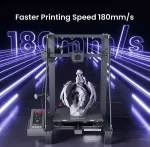3D printing technology, also known as additive manufacturing, has revolutionized various industries by enabling the creation of complex three-dimensional objects. This revolutionary technology has found applications in numerous fields, ranging from healthcare and automotive to aerospace and fashion. In this article, we will explore some of the key application areas of 3D printing technology.
Healthcare Industry:
One of the most significant areas where 3D printing has made a remarkable impact is the healthcare industry. This technology has been used to create customized prosthetics and implants, making them more comfortable and efficient for patients. Additionally, 3D printing has facilitated the production of anatomical models and surgical guides, aiding surgeons in planning and practicing complex procedures. The ability to create patient-specific models has revolutionized medical education and improved patient outcomes.
Automotive Industry:
In the automotive industry, 3D printing has transformed the way prototypes and parts are manufactured. Prototyping with traditional methods can be time-consuming and expensive. However, with 3D printing, designers can quickly produce prototype components, allowing for faster iterations and cost-effective development processes. Furthermore, 3D printing has enabled the production of lightweight and complex parts that were previously difficult or impossible to manufacture using traditional methods.
Aerospace Industry:
The aerospace industry has embraced 3D printing technology due to its ability to create lightweight and durable components. By utilizing additive manufacturing techniques, aerospace engineers can produce intricate parts with complex geometries, reducing weight while maintaining structural integrity. This advantage translates into fuel efficiency and increased payload capacity for aircraft and spacecraft. Additionally, 3D printing enables the rapid production of spare parts, reducing maintenance costs and downtime.
Fashion Industry:
3D printing has opened up new avenues for creativity and customization in the fashion industry. Designers can now create unique, intricate patterns and textures that were previously impossible to achieve using traditional manufacturing methods. Customized accessories, jewelry, and even clothing can be produced on-demand, allowing for personalized fashion experiences. With 3D printing, the fashion industry is moving towards sustainable manufacturing practices by reducing waste and inventory.
Architecture and Construction:
The architecture and construction industries have also benefited from the application of laser engraver & cutter 3D printing technology. This technology enables architects and designers to create intricate and complex models that aid in the visualization of building designs. Additionally, 3D printing can be used to produce building components, such as walls, facades, and structural elements. This method not only reduces construction time but also allows for more design flexibility and customization.
Education and Research:
In the field of education, 3D printing has become an invaluable tool for enhancing learning experiences. Students can bring abstract concepts to life by creating physical models and prototypes. This hands-on approach fosters creativity and problem-solving skills. Moreover, 3D printing has revolutionized scientific research by enabling the production of custom laboratory equipment, realistic anatomical models, and intricate molecular structures.
The application areas of 3D printing technology are diverse and continually expanding. From healthcare and automotive to aerospace and fashion, this technology has transformed industries across the board. As advancements in 3D printing continue to emerge, we can expect further innovation and integration of this technology in numerous fields. Its ability to enable customization, reduce costs, and improve efficiency makes it a game-changer in various sectors, paving the way for a more sustainable and technologically advanced future.
.webp)
